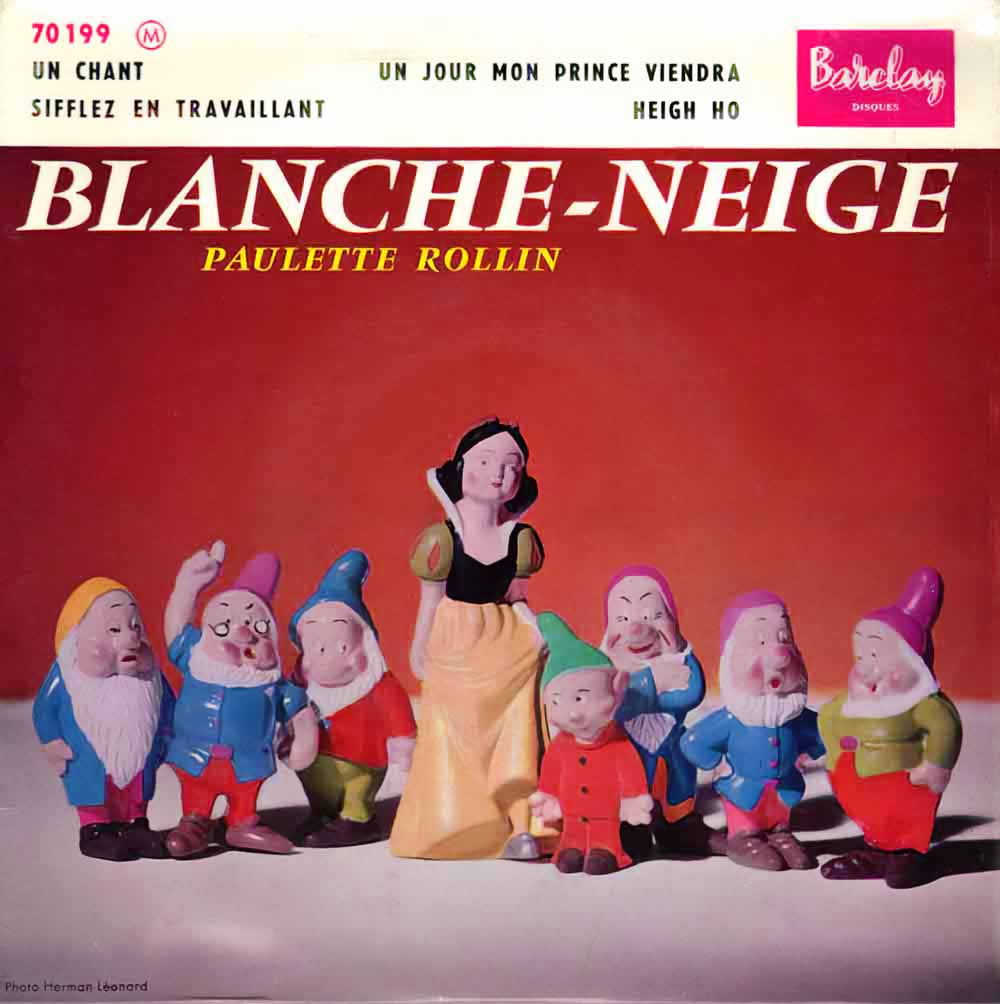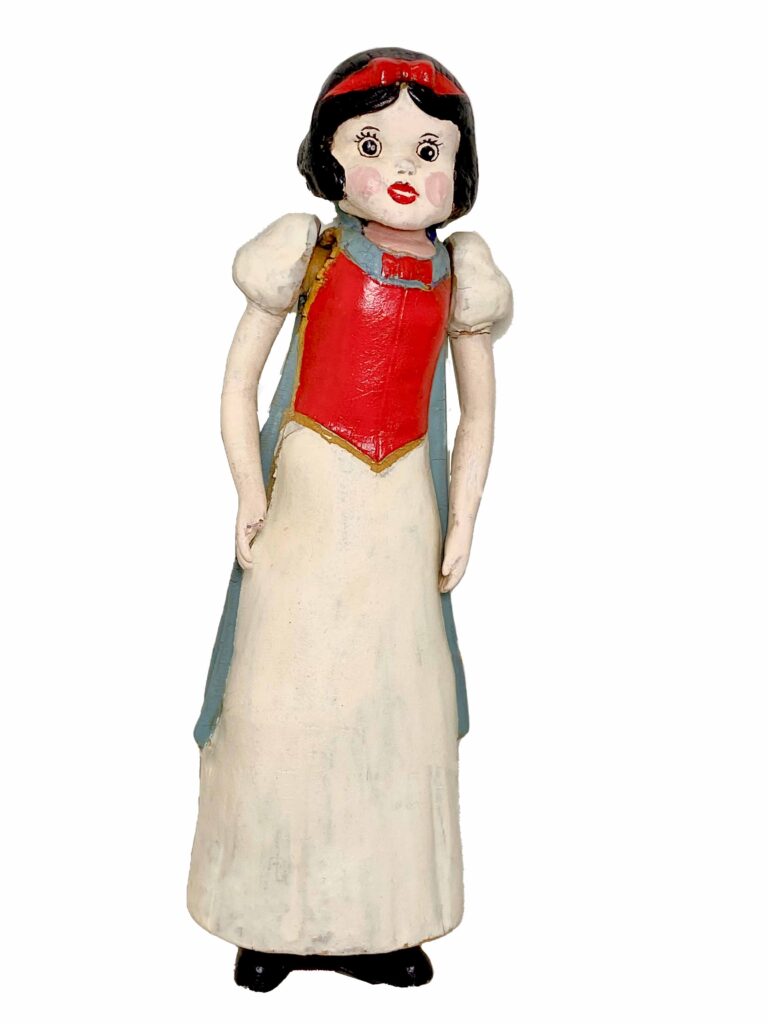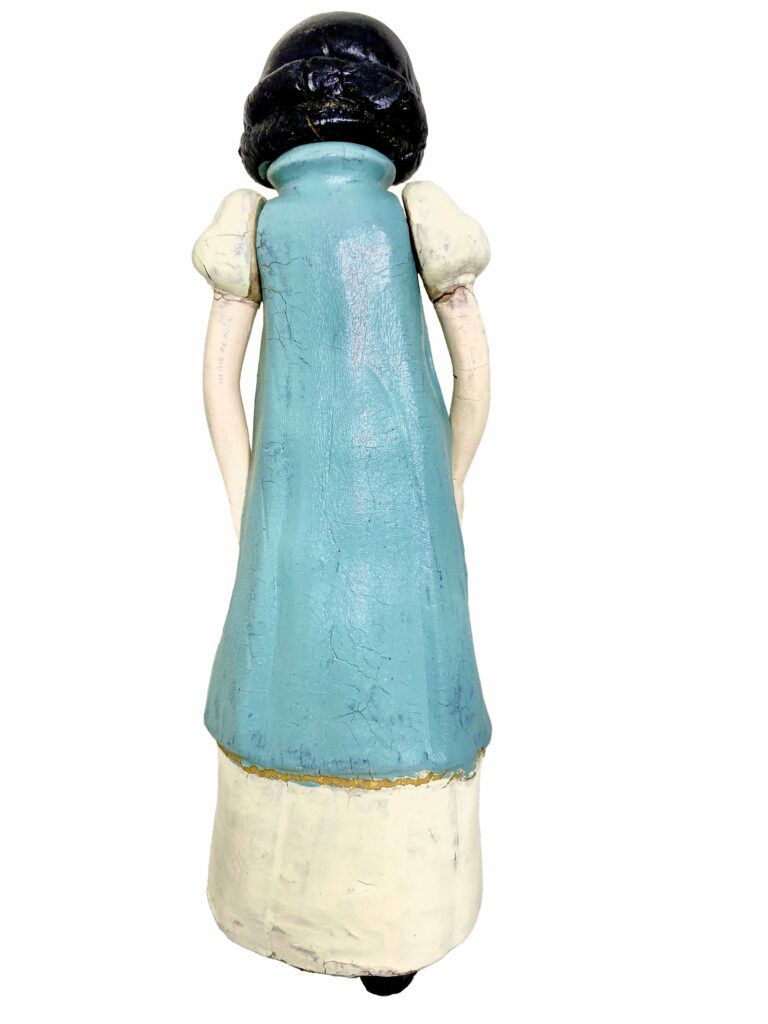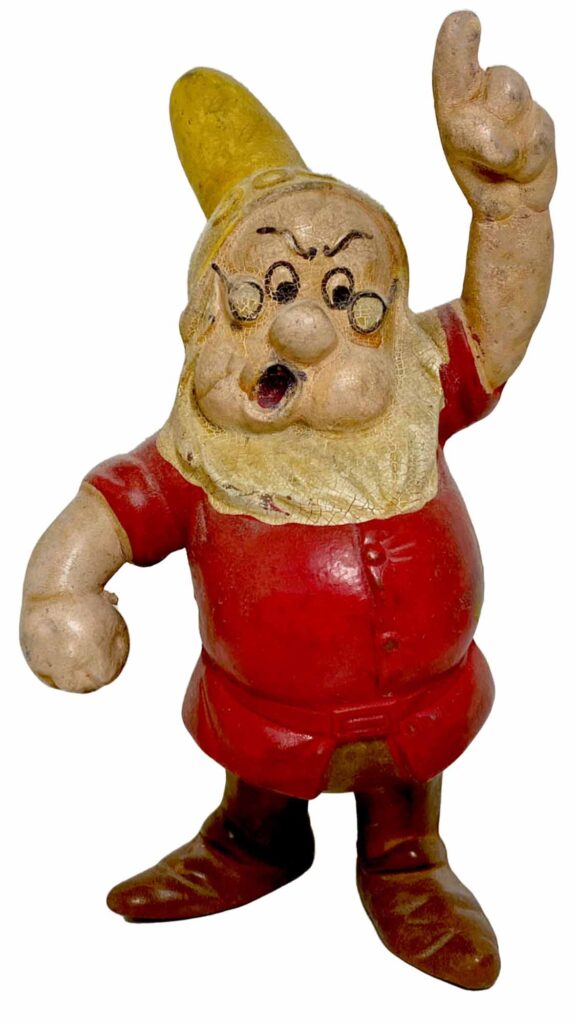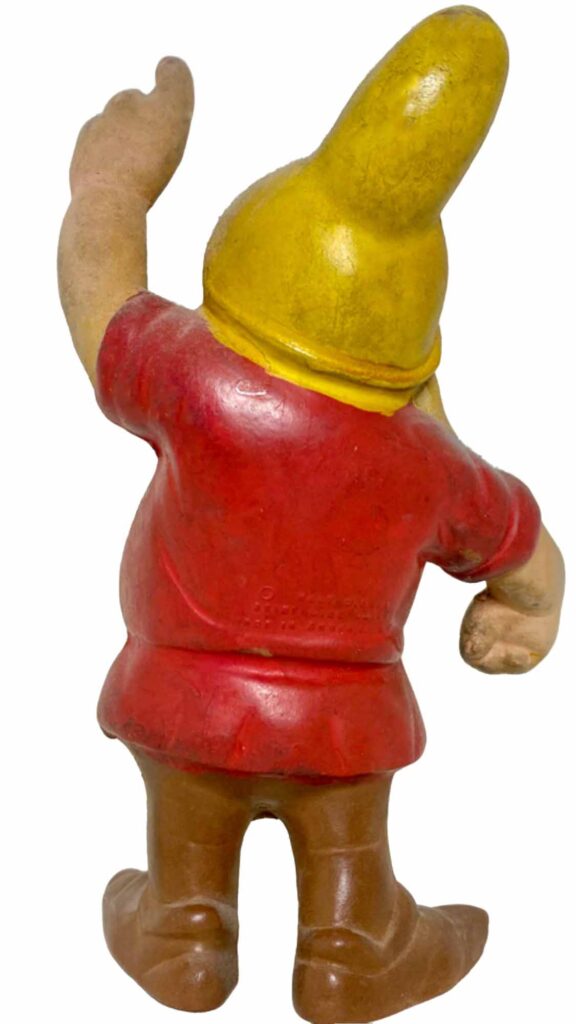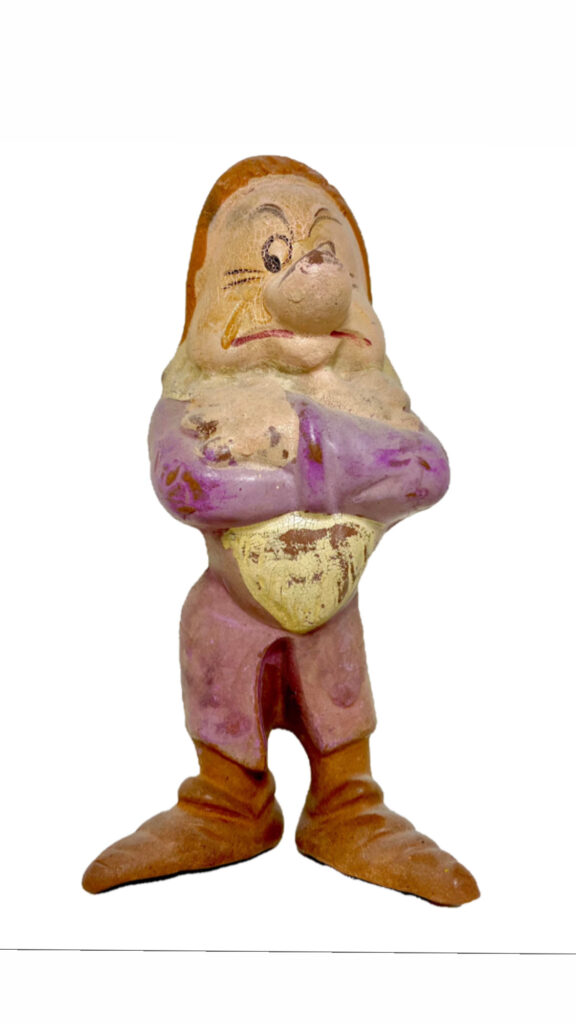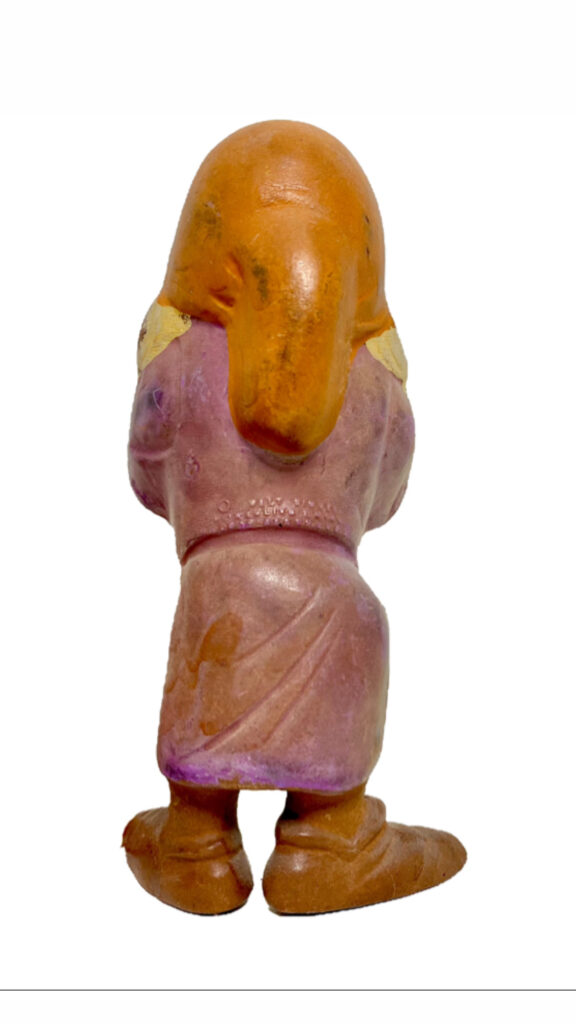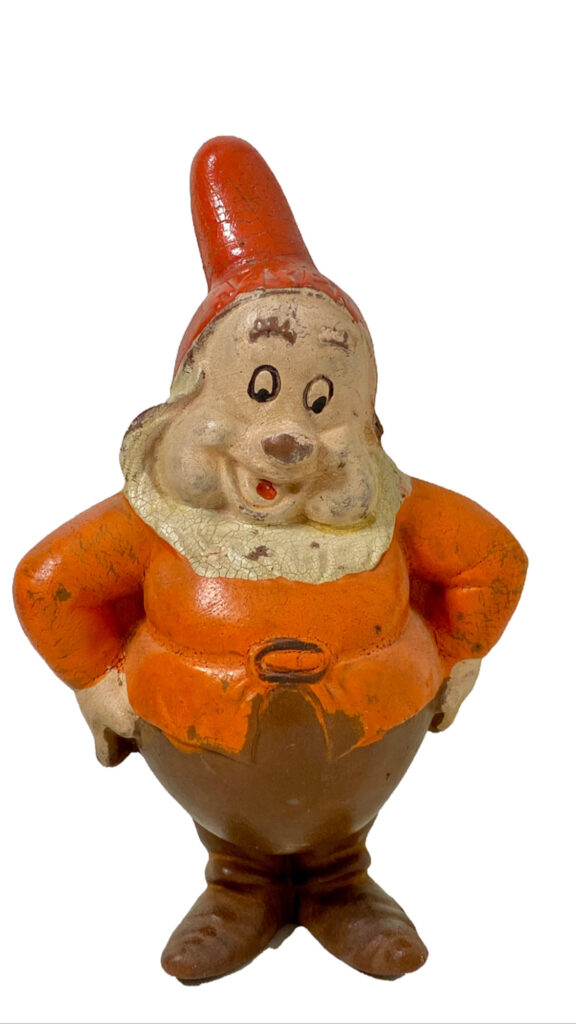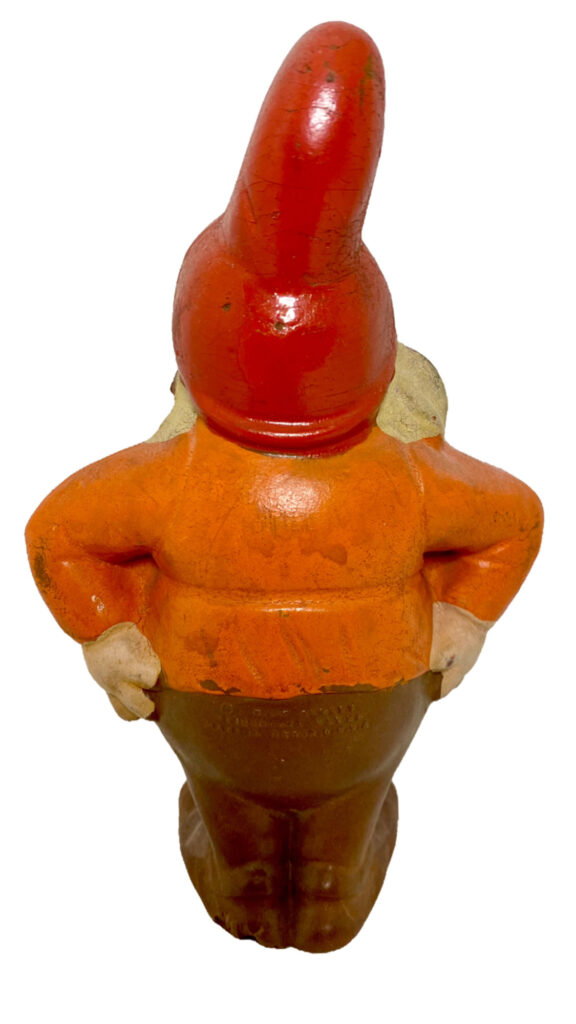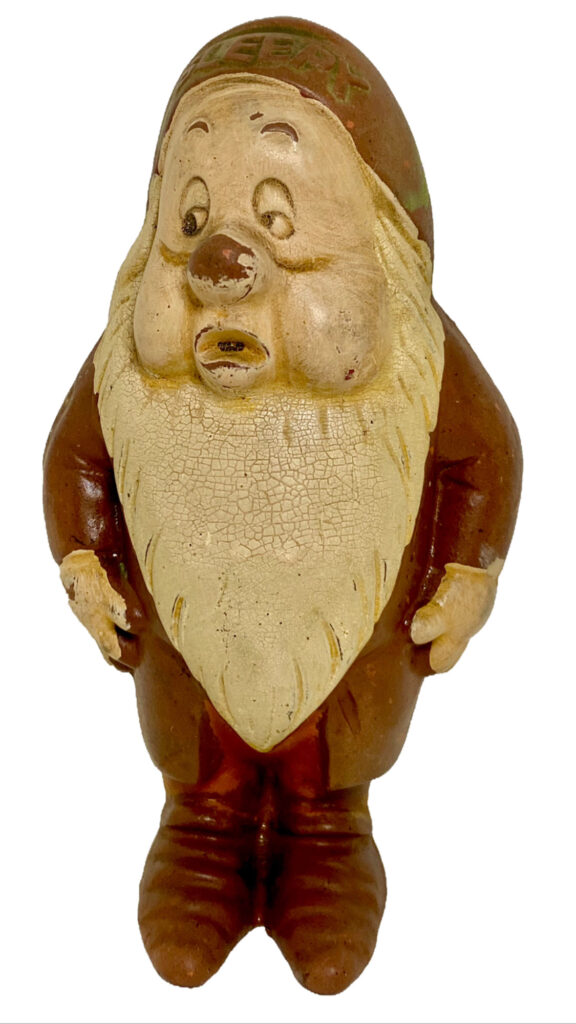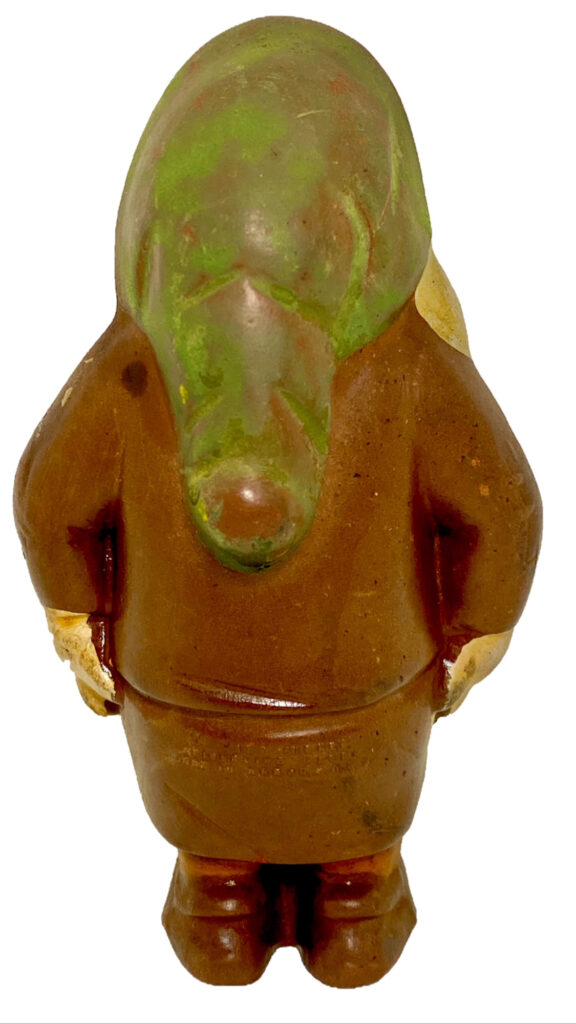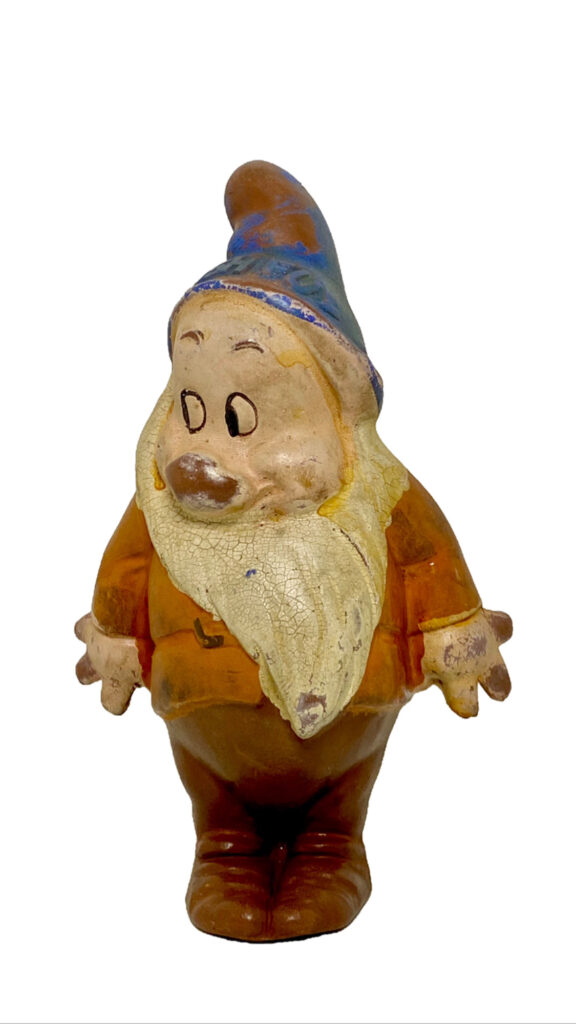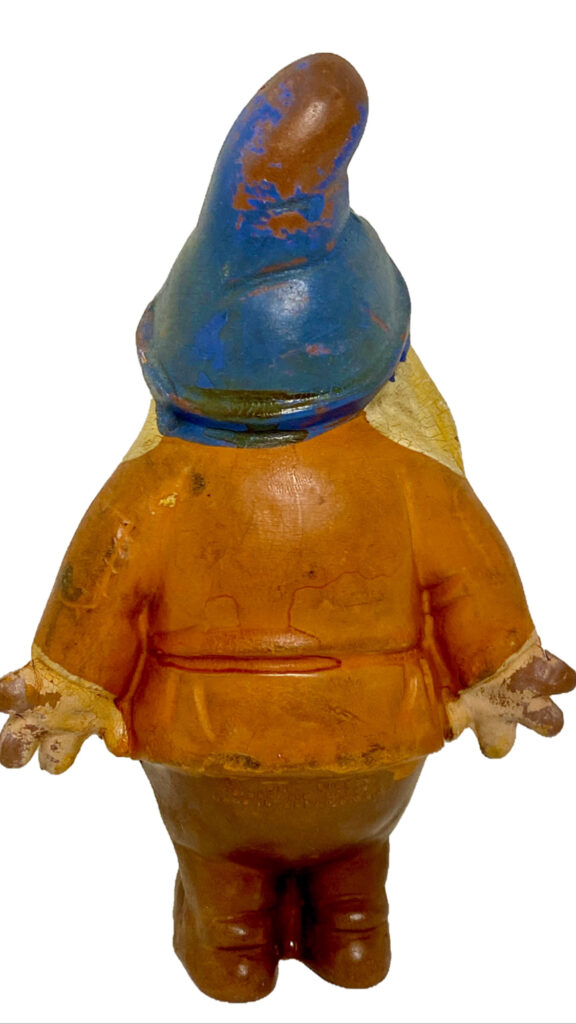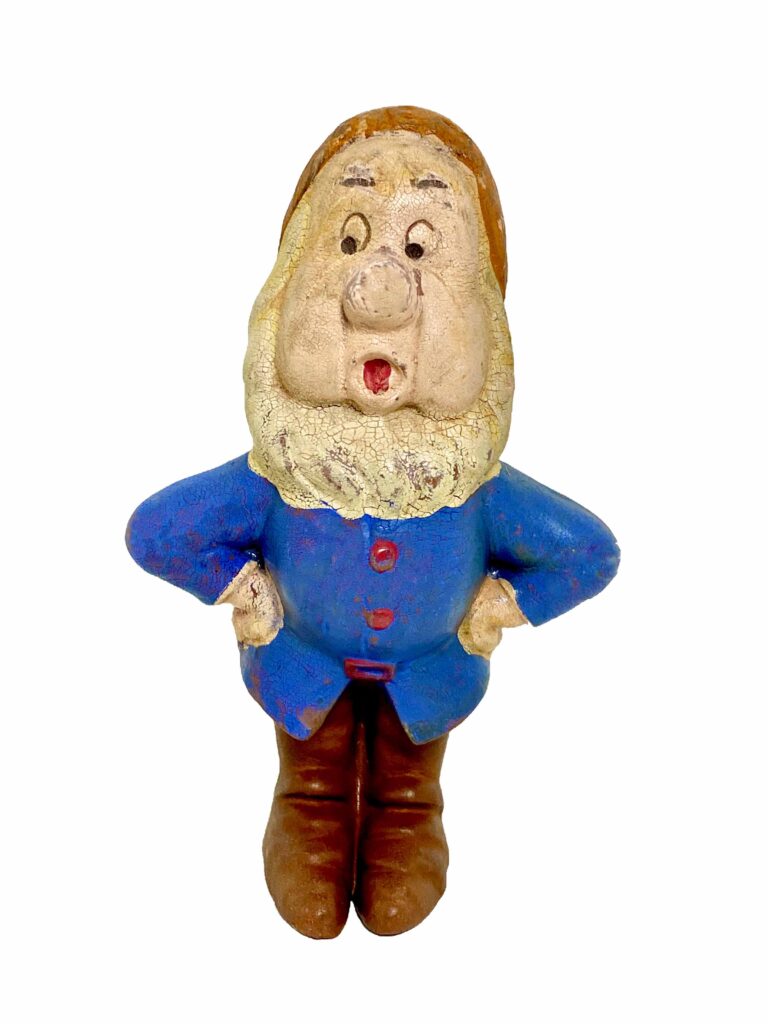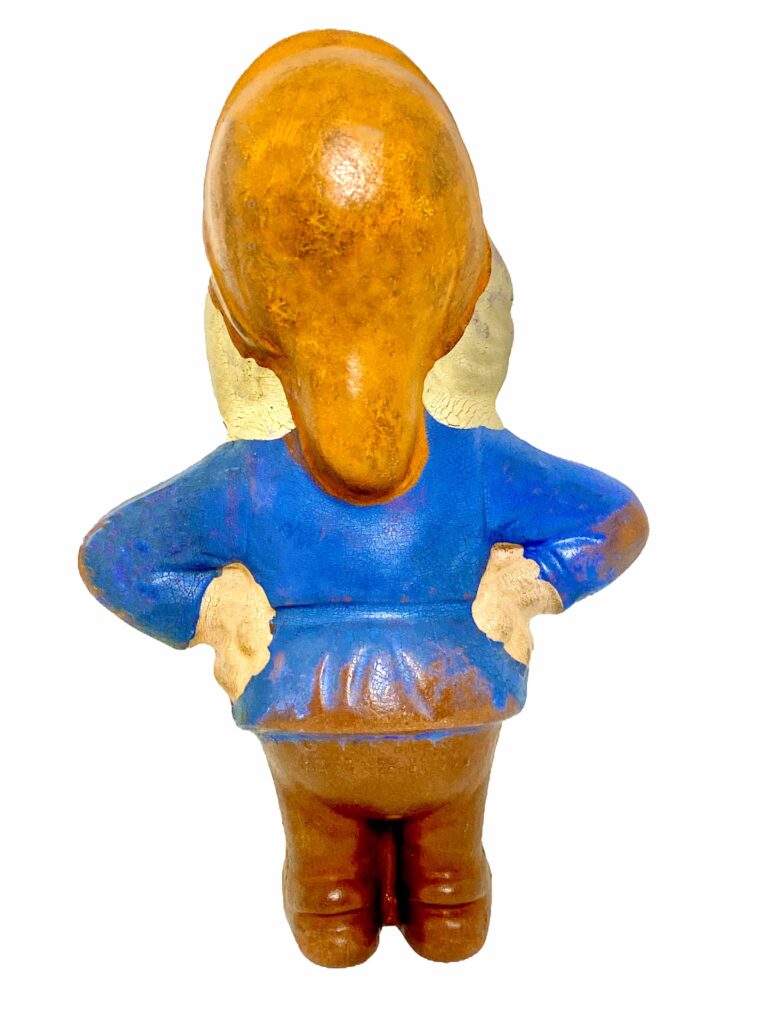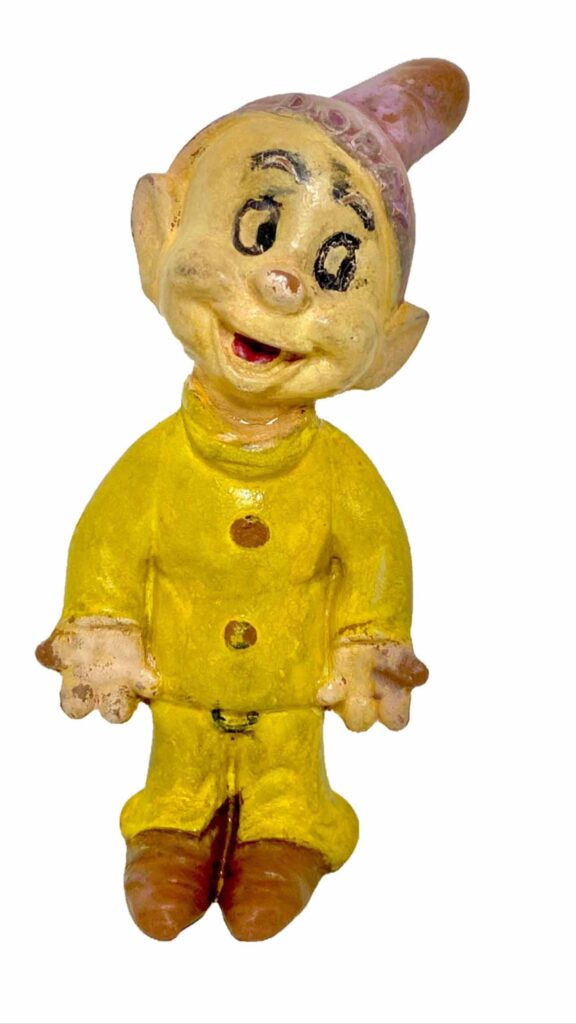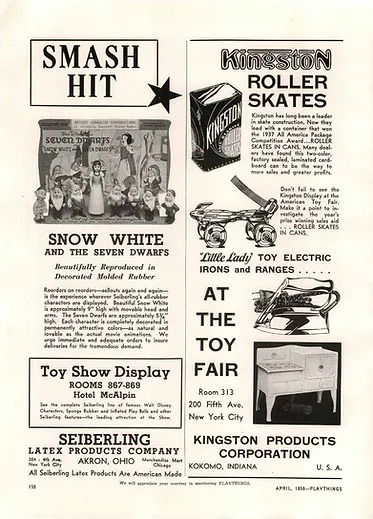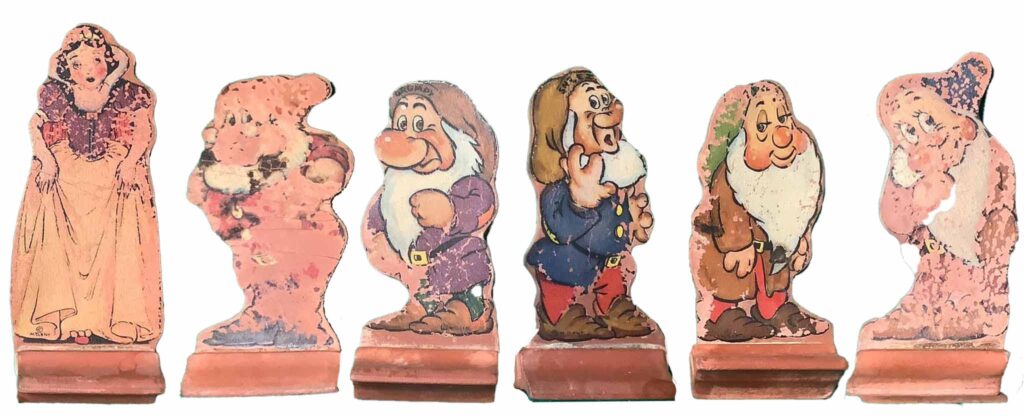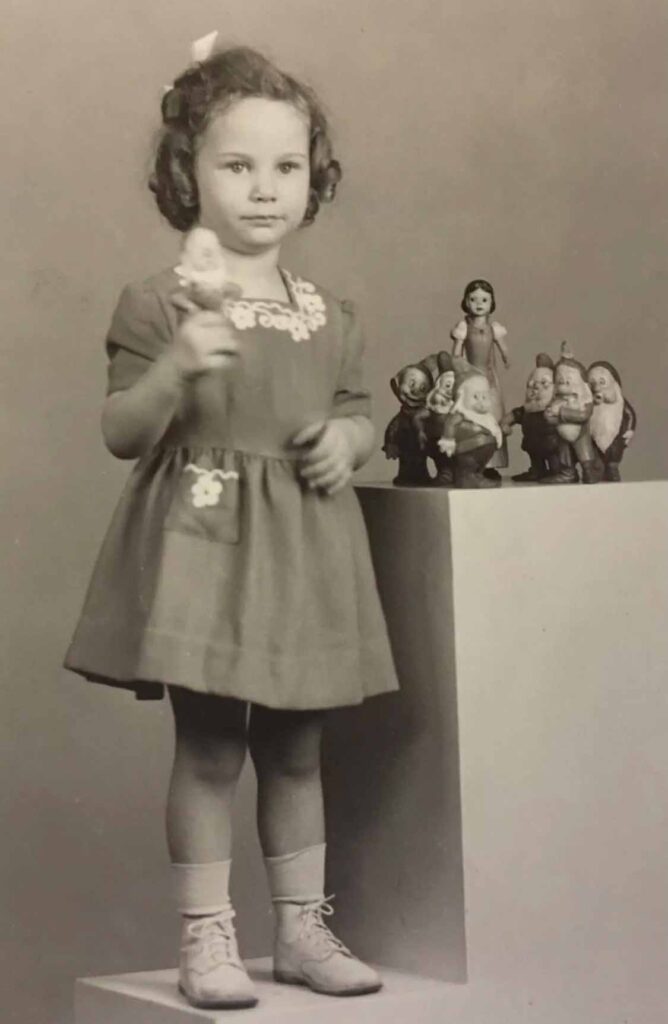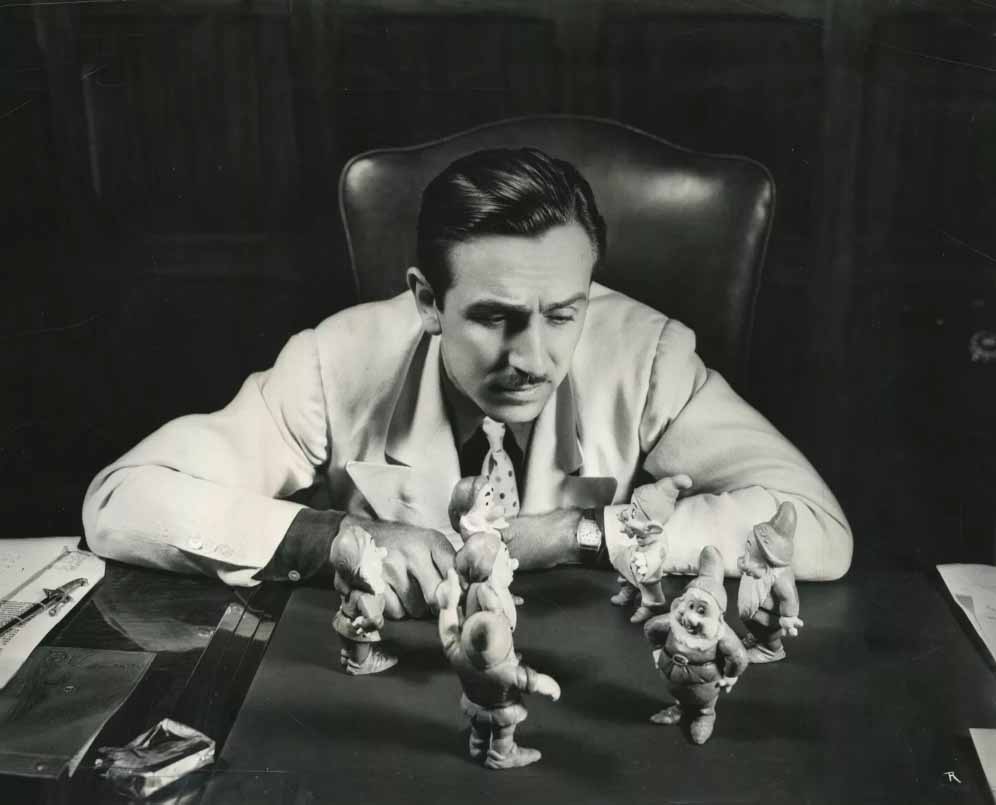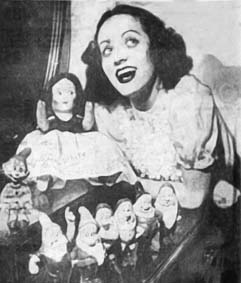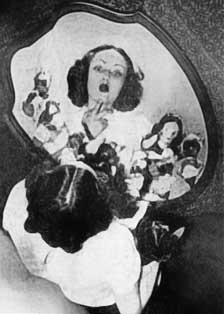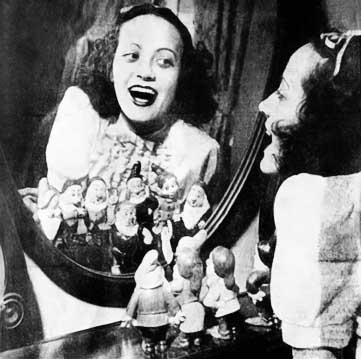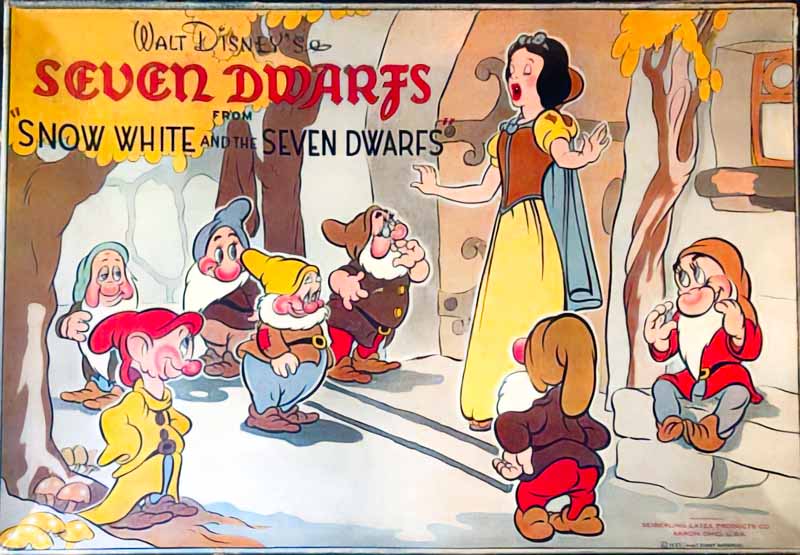
Even before the film’s release, the Seiberling latex products factory in Akron, Ohio, obtained authorization to create and sell hand-made, hand-painted latex figurines featuring the characters from Snow White and the Seven Dwarfs. The company had already produced figurines of Mickey, Donald, Pluto and other characters from the Disney stable, and was therefore confident in the success of this feature film.
The Figurines
The figurines were apparently sculpted by studio artist Bob Jones in July 1937. Among the film’s characters, Seiberling set their sights on the title figures, Snow White and the seven dwarfs. The other characters, despite their commercial potential, were not represented. And it was a wise decision. Indeed, while the rendering of the dwarfs is particularly good, that of Snow White and her design leaves much to be desired. There’s none of the grace of the little princess on screen. Her figure is hollowed out to lighten her weight, as she is much taller than the dwarfs, and her arms and head are articulated. Her apparent advantages have turned into flaws over time: the few figurines that have survived the ages have often collapsed due to the hollow, and the articulated parts are fragile.
The dwarfs, frozen in characteristic postures, have their names embossed on their caps to familiarize them with the public.
Thanks to an advertisement published in February 1938 in Toys and Bicycles magazine, we know that Snow White was sold individually for $1 and each dwarf for 50 cents. But the set was also available in an illustrated box in the April 1938 issue of Playthings magazine. Two sets were available in boxes with similar lids: one with the dwarfs and Snow White, and another without Snow White.
It’s worth noting that the figurines had the immense honor of appearing in the film’s promotional trailers, as well as in photos with Walt Disney, one of which notably graced the cover of Times magazine. Snow White’s figurine is absent from all these appearances, but Dopey’s is more elaborate than the one finally produced. He is shown with his arms outstretched and his leg raised, as if walking, which was not intended to contribute to the figurine’s stability and probably caused the change.
The figurines were a great success, and hundreds of thousands were produced. The serial numbers 1 to 7 can be seen on the back of each one. Finally, Seiberling also produced flat figures (“figurettes”) of the same characters from the film, also available in a special box.
Reproductions
In 1938 and again in 1963 in France, 13-centimetre Delacoste figurines, made on the same model as these, but empty and malleable to make noise when squeezed. A photo of the figurines can be found on the cover of Paulette Rollin’s 1958 album. It’s impossible to know whether these are Seiberlings or Delacostes, which would have been made earlier than 1963. At most, we can see that the Snow White figurine is not the Seiberling one.
